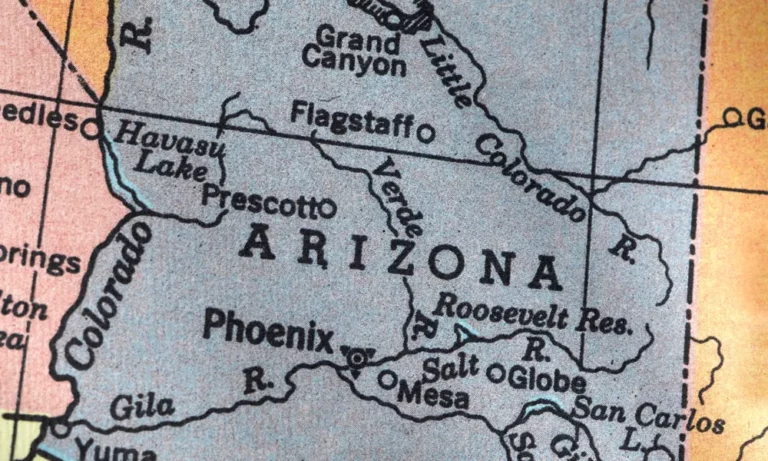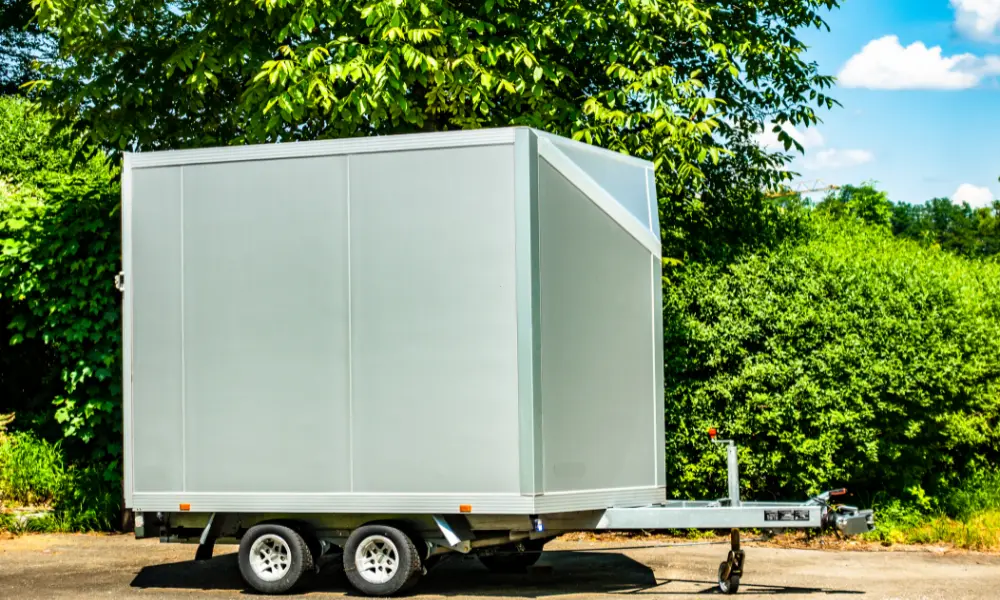Navigating the maze of Arizona vehicle emissions testing requirements can feel overwhelming, especially if you’re a first-time car owner or new to the state. Your vehicle must pass emissions testing if you live in or commute to the Phoenix or Tucson areas. This requirement helps reduce air pollution and ensures your car runs efficiently. Read on to ensure your vehicle meets all necessary standards.
Overview of Arizona Emissions Testing
Emissions testing is crucial to maintaining clean air in Arizona. The Arizona Department of Environmental Quality (ADEQ) manages the emissions testing program.
You must get your vehicle tested if you live or commute to Phoenix or Tucson. These areas have higher levels of air pollution.
Vehicle Types Subject to Testing:
- Cars
- Trucks
- Motorcycles
Testing Frequency:
- Vehicles 5 model years old and newer: Exempt
- Vehicles older than 5 model years: Tested every 1-2 years
Testing Locations and Hours:
Testing centers are available throughout the Phoenix and Tucson metropolitan areas. You can find locations and hours here.
Testing Fees:
- Phoenix: $16 to $25
- Tucson: $12.25
Exemptions:
- Vehicles model year 1967 and older
- Certain alternative fuel vehicles
By ensuring your vehicle passes the emissions test, you help improve Arizona’s air quality. Failure to pass the test can result in fines and the inability to register your vehicle.
Tips for Passing the Test:
- Keep up with maintenance
- Check your engine light
- Use the correct fuel type
Testing Requirements and Exemptions
Arizona mandates specific emissions testing rules meant to ensure vehicles contribute less to air pollution. Here’s what you need to know about which vehicles need testing and the available exemptions.
Required Vehicles and Model Years
All vehicles from model year 1967 and newer in metro areas like Phoenix and Tucson must undergo emissions testing. This rule includes cars, trucks, and diesel vehicles. Even if you commute to these areas for work or school, your vehicle falls under this requirement.
If your vehicle uses alternative fuels or is electric, it may be exempt from testing since they generally produce fewer emissions. Reconstructed vehicles also need to be tested, depending on their model year and type.
Exemption Criteria
Certain exemptions apply to specific vehicle types. For example, electric vehicles and hydrogen-powered vehicles are exempt due to their low emission output. If your vehicle is less than 5 model years old, it is also exempt.
Diesel vehicles weighing more than 26,000 pounds are not required to undergo testing. Always check your vehicle’s eligibility based on its type and fuel source.
Out-of-State and Temporary Exemptions
If your vehicle is out of state for at least 90 days before your registration expires, you can apply for an exemption. This process is often done online. If you’re in another state with its emissions program, you may need to get tested there and submit those results to Arizona.
Temporary exemptions can also apply if your vehicle is temporarily out of the testing area. Just be prepared to show proof, such as travel documentation, to qualify for this type of exemption.
For more detailed information on these exemptions, check Arizona Car Inspection Exemptions.
Understanding the Emissions Test Process
Arizona requires vehicles to undergo emissions testing to keep the air clean and safe. These tests ensure your vehicle’s emissions control equipment is working properly while meeting state environmental standards.
Test Types and Procedures
Arizona uses several test types to check different aspects of vehicle emissions. The most common are the Idle Test, Loaded Test, and Smoke Opacity Test. In an Idle Test, the vehicle’s engine idles, and emissions are measured. The Loaded Test uses a dynamometer to simulate actual driving conditions. During the Smoke Opacity Test, an opacity meter checks the thickness of the smoke from diesel vehicles.
You need to visit an approved emissions testing location to get your vehicle checked. Vehicles that fail the test might need repairs and a retest to pass.
On-Board Diagnostics (OBD) Tests
Modern cars often require OBD tests. These tests plug into the car’s OBD system to check various components. The OBD system monitors the engine, emissions control system, and more. If the system finds an issue, it will light up your “Check Engine” light.
OBD tests are quicker than other types because they don’t require tailpipe probes or additional equipment. You should ensure there are no warning lights on before taking the test to avoid failing. If any issues are detected, addressing them promptly will help you pass.
Diesel and Heavy Vehicle Testing
Diesel and heavy vehicles have different procedures. These vehicles often undergo the Loaded Opacity and Idle Tests. The loaded opacity measures smoke emissions during simulated driving conditions. The Idle Test measures emissions while the vehicle idles.
Diesel vehicles must meet stricter standards because of their larger impact on air quality. An emissions testing location will have the equipment to test these vehicles properly. Regular maintenance and avoiding tampering with emissions equipment are key to passing these tests.
Motorcycles currently do not require emissions testing, but it’s still important to keep their emissions under control. Each visit ensures your vehicle stays compliant with Arizona’s environmental laws.
Emissions Testing Locations and Wait Times
When you need to get your vehicle emissions tested in Arizona, it helps to know where to go and the best times to visit to avoid long lines. Here are some tips on finding a testing station and planning your visit.
Finding a Testing Station
You can find emissions testing stations throughout Arizona, especially in the Tucson areas and Maricopa County. To locate a convenient station near you, search by your zip code. Websites like myAZcar.com provide a list of stations and their current wait times.
For example, two popular locations in Glendale are at 5850 W. Beverly Ln. and 7140 N 110th Ave. Checking online before you go can save you time since wait times can change quickly. Always make sure your vehicle meets the specific requirements for your area, such as those in Area A.
Best Times to Visit
Timing your visit can make a big difference in how long you spend at the testing station. Weekdays from 4-5 p.m. and Saturday afternoons are generally less busy times. These are often the best times to avoid long lines.
It’s also smart to avoid the start and end of the month, as many people tend to renew their registration around these times. Checking sites with up-to-date wait times can help you pick the best moment to go. If you’re in Maricopa County or Tucson, planning can help you breeze through the emissions test quickly.
Taking these steps ensures you spend less time waiting and more time enjoying your day.
Registration and Renewals
You’ll need to align your vehicle emissions testing with registration and be aware of the timelines involved for smooth renewals. This ensures your vehicle stays compliant with Arizona laws and keeps you on the road hassle-free.
Linking Emissions Testing with Vehicle Registration
In Arizona, your vehicle’s emissions test is directly linked to its registration. The Arizona Department of Environmental Quality handles the emissions testing program.
Your vehicle must pass an emissions test no more than 90 days before registering it. For ease, it’s recommended to complete the emissions test around the same time as the registration. This aligns your testing and registration cycles, making future renewals simpler. Emissions test results are sent electronically to the Motor Vehicle Division (MVD), so you won’t need to submit any paperwork to prove your vehicle passed the test.
Renewal Notices and Timelines
When the time to renew your registration is nearing, you’ll get a registration renewal notice. This notice will inform you if an emissions test is needed.
Make sure to complete any required emissions testing within the 90-day window before your registration’s expiration date. This will help avoid any last-minute rush. You can renew your registration online, by mail, or in person at an MVD office. If your vehicle is exempt, you’ll be notified in the renewal notice, making the process smoother and saving you time.
By staying on top of these timelines and requirements, you can ensure your vehicle meets Arizona’s regulations without any surprises.
Fees, Waivers, and Repair Programs
In Arizona, vehicle emissions testing involves specific fees, possible waivers, and repair programs to help you meet state requirements. Understanding these programs can make the process smoother and more cost-effective.
Emissions Test Fee Structure
When you take your vehicle for an emissions test in Arizona, you can expect to pay different fees based on vehicle type and location. Standard vehicles usually incur a fee around $17, while large vehicles, such as trucks and RVs, may face higher charges.
Special rates could apply for military personnel, and certain test stations may offer convenient payment options like cash or credit. If your vehicle is new or electric, don’t forget that exemptions might make this process easier for you.
Waivers and Special Circumstances
Failing an emissions test isn’t the end of the road. Arizona offers waivers under specific conditions. If your vehicle fails the emissions test at least twice, you may qualify. The amount you must spend on repairs depends on the age and location of your vehicle.
For detailed regulations and to find a waiver location, visit Arizona emissions waivers. Waivers can make it possible for you to legally drive your vehicle even if it doesn’t meet all emissions standards.
Voluntary Vehicle Repair Program
If repair costs seem high, the Voluntary Vehicle Repair Program (VVRP) helps eligible vehicle owners reduce expenses. You pay a $100 co-pay, and the program covers up to $900 toward emissions-related repairs.
Participation requires pre-approval and using an approved repair facility. ADEQ ensures these facilities meet specific standards, including having certified technicians. The program guarantees that your vehicle will pass emissions testing, easing both financial and regulatory burdens.
By being aware of these fees, waivers, and repair programs, you can better navigate Arizona’s emissions testing requirements.















